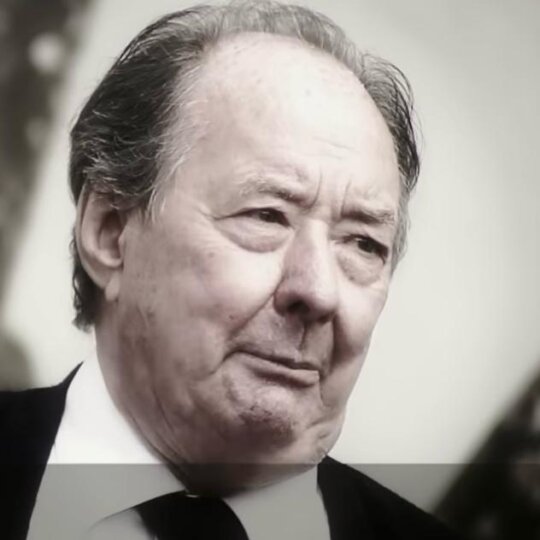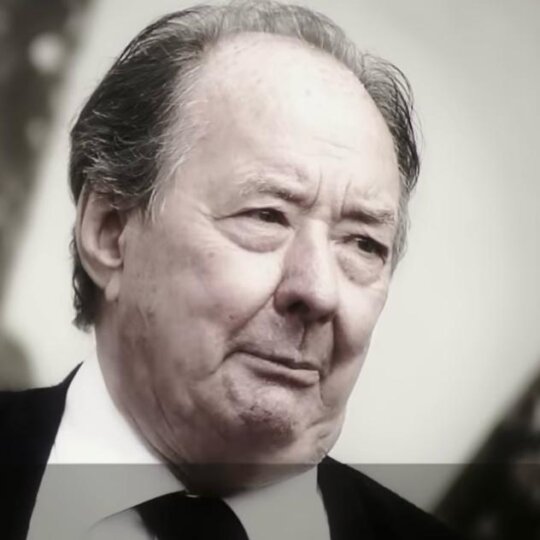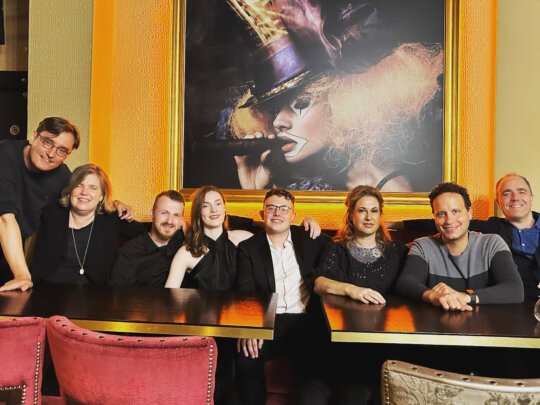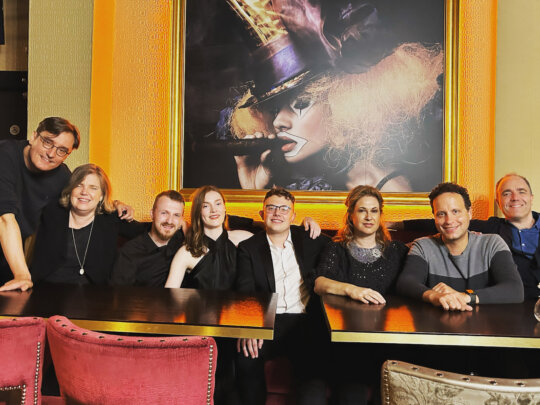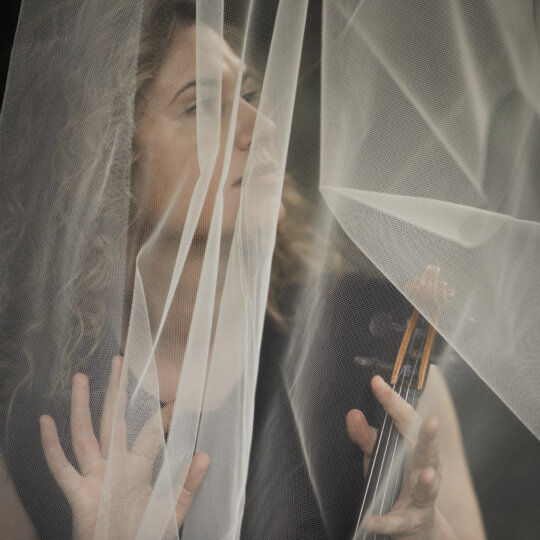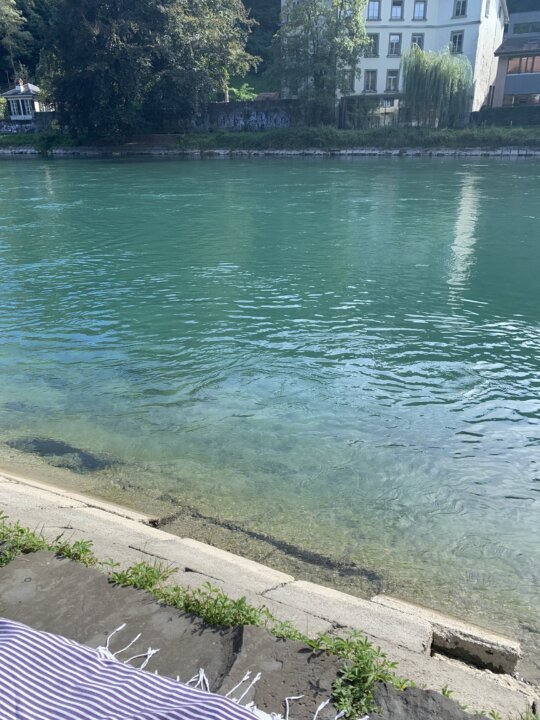Igor Ozim
Mein Lehrer, Professor Igor Ozim, ist kürzlich, am 23. März 2024, verstorben. Mein Unterricht bei ihm begann, als ich 18 Jahre alt war, nach einem Sommer mit einer Reihe von Meisterklassen in seiner Heimat Slowenien sowie in Klagenfurt und Semmering. Professor Ozim kümmerte sich sehr engagiert um seine Schülerinnen und Schüler. Da ich mir ein Studium in der Schweiz nicht leisten konnte, drückte er mir eine Liste von Wettbewerben in die Hand, an denen ich teilnehmen sollte, um mir so die finanzielle Grundlage für den Unterricht in seiner Berner Klasse zu schaffen. Einen davon gewann ich, und so reiste ich von Dublin aus in die Schweiz, mit meiner Geige in der einen und einem Koffer in der anderen Hand.
Igor Ozim
My teacher, Professor Igor Ozim, passed away very recently, on 23 March 2024. I came to his class as an 18-year-old, fresh from a series of summer master classes with him in his home country Slovenia, and in Semmering and Klagenfurt, Austria. Professor Ozim cared greatly for his students. Unable to afford studies in Switzerland, he sent me a list of competitions I could play at, in order to obtain the necessary financial basis upon which to study in his class in Bern. I won one of those competitions, and travelled from Dublin, a violin case in one hand, suitcase in the other.
GAIA Music Festival - Promoting a New Set of Core Values in Classical Music (3-minute read)
The world of classical music in which I roam is bubbling with inspiring and exciting artists and ideas. Yet, despite this, and because of it, there is much to consider in the way classical music continues to be practised, as well as the way it is marketed to the public.
GAIA Musikfestival - Förderung neuer Grundwerte in der klassischen Musik (Lesezeit: 3 Minuten)
Die Welt, in der ich mich bewege – die klassische Musik – steckt voller inspirierender und aufregender Künstlerinnen und Künstler. Hier sprudelt es nur so vor Ideen. Trotzdem – oder gerade deshalb – sind dafür, wie klassische Musik weiterhin ausgeübt wird und wie man sie vermarktet, viele Faktoren zu bedenken.
Bringing the Wealth Home (2-minute read)
Growing up in Ireland in the 80’s and 90’s was an experience that greatly shaped me as a human being and as a musician. The sense of community, kindness, humour and respectful way about people was deeply impressed upon me. I wanted to be a part of it, I wanted to jump on every opportunity to be involved. Arriving to the island as a young child, I was welcomed by inquisitive classmates who showed me the lay of the land. Having had low numbers of immigrants in recent times in comparison to other countries, the arrival of newcomers from across the world as of the late 90’s felt exciting, fresh and like Ireland had not only been discovered, but had discovered itself.
Back to the roots: Musikalischer Reichtum kommt zurück auf die grüne Insel (Lesezeit: 2 Minuten)
Meine Kindheit und Jugend im Irland der 1980er und 1990er Jahre hat mich als Mensch und Musikerin tief geprägt. Der Gemeinschaftssinn, die Freundlichkeit, der Humor und der respektvolle Umgang, die ich dort erlebte, haben bei mir einen tiefen Eindruck hinterlassen. Ich wollte dazugehören und nutzte dafür jede Gelegenheit. Als ich als kleines Mädchen in Irland ankam, nahmen mich meine neugierigen Klassenkameraden in Empfang und brachten mir alles über das Land bei. Angesichts einer vergleichsweise eher geringen Anzahl von Einwanderinnen und Einwandern fühlte sich die Ankunft von Neuankömmlingen aus aller Welt Ende der 90er Jahre sehr aufregend an, so als ob Irland nicht nur entdeckt worden wäre, sondern sich selbst entdeckt hätte. Aber das Leben auf der grünen Insel hatte auch seine Schattenseiten und naturgegebenen Begrenzungen. Alle bedeutenden Geigerinnen und Geiger dieser Jahrzehnte und der Folgezeit verliessen Irland für ihr Studium. Auch wenn diese Entscheidung für manch ambitionierten Musiker und manche begabte Musikerin ein natürlicher Schritt ist: In anderen Ländern Europas gehört er nicht zwangsläufig zur künstlerischen Entwicklung. In Deutschland, Österreich, Grossbritannien, den Niederlanden – um nur einige zu nennen – gibt es so viele gute Lehrerinnen und Lehrer für Streichinstrumente, dass Studierende überall in den Städten jemanden mit Renommee finden. Iren kommt das Studium im Ausland teuer zu stehen. Das gilt nicht nur für die Familien junger Musikerinnen und Musiker, sondern auch für den Fortbestand der Streichmusik: Das Ökosystem der klassischen Musik erleidet Verluste, während andere Teile der Welt weitere grossartige Talente aus Irland für sich gewinnen.
| #Live, #Recordings, #Music
Discovering Neglected Works by Kaprálová, Castelnuovo-Tedesco and Saminsky
In this podcast, join The Strad Magazine's Davina Shum and I as we discover neglected works by Vítězslava Kaprálová, Mario Castelnuovo-Tedesco, Lazare Saminsky, Irène Régina Wieniawski and Lili Boulanger. The pieces share similarities: they are all an ideal fit for the encore repertoire, consist of sparkling melodies and form a symbiosis with the piano part.
| #Writing, #Recordings, #Music
Legends (4-minute read)
One of the most effective, distinctive, flamboyant, self-assured and, admittedly, short virtuoso pieces in the violin repertoire remains mostly unknown. The piece creates as glamourous an atmosphere as the composer might have been charming, and when played in recital amongst giants of the bravura repertory, maintains its integrity, walking coolly amongst the throng. Had the piece effectively been the woman it appears to describe, she would have had the allures of a diamond-clad diva. The work is entitled “Tango” – although it is more like a pastiche of all kinds of passionate dances. The very first leap to a C high up on the G string in this Tango challenged me for weeks. It rivals the trickiness of that first ascending scale in Sarasate’s “Zigeunerweisen” and it fools the player with the seeming innocence of the F sharp to B jeté in the opening bars of Kreisler’s “Caprice Viennois”. “I wonder if, like Sarasate or Kreisler, this composer was a violinist?” I mumbled to myself as I reached for that C, swinging my left arm around the rib of the violin over and over again. This is not the kind of piece you begin a recital with. You need to have warm muscles to even attempt it with the nonchalance that it demands. Within the first thirty seconds, octaves on various strings in close succession, expressive melody lines, rapid, ascending scales, a bar squeezed to bursting with sixths and ricochet figures are all on show, revealing this work as equal parts brilliant and exacting. Like so many extraordinary encore pieces, it takes hours of practice to hone, but is over in three minutes when performed. And yet, despite being outstanding, it remains: a piece for violin and piano that few have heard of, the composer a mononym mystery. The work is by Poldowski. Poldowski?
| #Writing, #Recordings, #Music
Legends (Lesezeit: 4 Minuten)
Eines der am beeindruckendsten, markantesten, extravagantesten, selbstbewusstesten – und zugegebenermassen auch kürzesten – Virtuosenstücke des Repertoires für Geiger:innen ist nach wie vor weitgehend unbekannt. Das Werk erzeugt eine Atmosphäre, die an Glamour und Charme dem seiner Komponistin in nichts nachsteht, und wenn es bei einem Konzert inmitten anspruchsvoller Bravourstücke vorgetragen wird, behauptet es gelassen seine Position. Wäre das Stück tatsächlich die Frau, die es scheinbar beschreibt – man sähe sie als mit Diamanten geschmückte Diva vor sich. Es trägt den Titel «Tango», reiht jedoch eher alle Arten leidenschaftlicher Tänze aneinander. Der allererste Sprung des Tangos zu einem C hoch oben auf der G-Saite beschäftigte mich wochenlang. Er steht der Tücke der ersten aufsteigenden Tonleiter in Sarasates «Zigeunerweisen» in nichts nach und täuscht dem Spieler dieselbe Unschuld vor wie das Jeté von Fis nach B in den ersten Takten von Kreislers «Caprice Viennois». «Ob die Komponistin wohl Geigerin war, so wie Sarasate oder Kreisler?“, murmelte ich vor mich hin, während ich nach dem C griff und meinen linken Arm immer wieder aufs Neue um den Körper der Geige schlang. «Tango» eignet sich nicht als erstes Stück eines Konzerts. Damit man es überhaupt mit der nötigen Nonchalance spielen kann, müssen die Muskeln bereits aufgewärmt sein. Gleich in den ersten dreissig Sekunden fordern dicht nacheinander gespielte Oktaven auf verschiedenen Saiten, ausdrucksstarke Melodien, schnelle aufsteigende Tonleitern und ein zum Bersten mit Sechsteln und Ricochet-Motiven gefüllter Takt den Geiger oder die Geigerin. Und von Anfang an ist klar: „Tango“ ist ebenso brillant wie anspruchsvoll. Wie so viele aussergewöhnliche Stücke für die Zugabe erfordert es stundenlanges Üben, ist aber schon nach drei Minuten vorbei. Doch trotz seiner Aussergewöhnlichkeit ist es nach wie vor ein Stück für Violine und Klavier, von dem nur wenige gehört haben. Wir verdanken «Tango» einem mysteriösen Komponisten mit nur einem Namen: Poldowski. Poldowski?
| #Writing, #Connectedness, #Music
Berne baby, Berne (blog article, 2-minute read)
At this time of year, in 1996, I arrived to Berne. Perhaps the constellations bore similarity to their present alignment. I had a violin case on my back, a small suitcase in one hand, and a certain sense of excitement intermingled with apprehension as I stepped off the train that had brought me from Zurich airport. Walking out onto the main station square, I heard a lilting, song-like language around me. Bärndütsch. It would take me quite some time to understand the language, and the culture that came along with it. In the high German I had learned at school, I turned to a stranger and asked for directions to Berne’s “Konsi” - I was to meet my teacher Igor Ozim there for the start of semester. My first semester as a third-level student, my first time away from home, alone, for more than just some days.








